AI Video Generators: Insights on Google’s Veo 3 & Sora
Discover AI video generators with insights on Google’s Veo 3 & Sora. Unlock creativity and efficiency in video production today!
Introduction to AI Video Generators
What Are AI Video Generators?
AI video generators are advanced software tools that leverage artificial intelligence to create video content automatically. These tools can transform text, images, or raw data into dynamic video presentations, often with minimal human intervention.
By using machine learning algorithms, AI video generators can produce high-quality videos that can be used for marketing, education, entertainment, and more.
Key Features of AI Video Generators
AI video generators come with a variety of features designed to simplify the video creation process. Common features include text-to-video conversion, where users can input a script or text and the AI generates a corresponding video.
Additionally, many platforms offer customizable templates, voiceover capabilities, and the ability to integrate multimedia elements such as images, music, and animations. These features enable users to create professional-grade videos without extensive video editing skills.
Google’s Veo 3
Google’s Veo 3 is one of the leading AI video generator platforms, known for its cutting-edge technology and user-friendly interface.
Veo 3 utilizes Google’s powerful AI algorithms to deliver seamless video production experiences. It offers a range of templates and customization options, allowing users to tailor videos to their specific needs.
With its advanced natural language processing capabilities, Veo 3 can effectively convert textual content into engaging video narratives.
Sora and Other Notable AI Video Generators
Sora is another prominent AI video generator that has gained popularity for its intuitive design and robust feature set. It provides users with the ability to create videos quickly and efficiently, making it ideal for businesses and content creators looking to streamline their video production processes.
Sora’s AI-driven tools enable the automatic selection of relevant visuals and animations, enhancing the overall quality of the output.
Beyond Veo 3 and Sora, the market is filled with a variety of AI video generators, each offering unique functionalities. These tools are continuously evolving, with developers incorporating the latest AI advancements to improve video quality, reduce production time, and expand creative possibilities.
As AI technology progresses, video generators are expected to become even more sophisticated, offering new opportunities for content creation across various industries.
Google’s Veo 3 Overview
Introduction to Veo 3
Google’s Veo 3 is an advanced AI video generator that leverages cutting-edge machine learning algorithms to create high-quality video content. Designed to cater to a wide range of users, from content creators to marketing professionals, Veo 3 offers an intuitive interface and robust features that streamline the video production process.
Key Features of Veo 3
One of the standout features of Veo 3 is its ability to generate videos from text prompts.
Users can input a script or a brief description, and the AI will produce a visually engaging video that aligns with the provided content. This feature is particularly useful for creating explainer videos, promotional content, and educational material.
Veo 3 also includes a library of customizable templates and assets, allowing users to personalize their videos with unique styles and branding elements.
Additionally, the platform supports multi-language capabilities, making it accessible to a global audience.
Integration and Compatibility
Veo 3 is designed to seamlessly integrate with other Google services, such as Google Drive and Google Photos, facilitating easy access to stored media and assets. The platform is also compatible with various third-party applications, enhancing its versatility and utility in diverse production environments.
Furthermore, Veo 3 supports multiple output formats, ensuring that the generated videos can be easily shared across different platforms, including social media, websites, and presentations.
AI and Machine Learning Capabilities
At the core of Veo 3 is its sophisticated AI engine, which employs deep learning techniques to understand and interpret user inputs.
This enables the platform to produce videos that are not only visually appealing but also contextually relevant and engaging.
The machine learning capabilities of Veo 3 allow it to continuously improve its video generation processes, adapting to user preferences and feedback to deliver increasingly refined results over time.
Use Cases and Applications
Veo 3 is ideal for a variety of applications, from corporate training and marketing campaigns to social media content creation. Its ability to quickly generate professional-quality videos makes it a valuable tool for businesses looking to enhance their digital presence and engage with audiences effectively.
Educational institutions and e-learning platforms can also benefit from Veo 3’s capabilities, using it to create interactive and informative video content that enhances the learning experience for students.
Exploring Sora AI Video Generator
Understanding Sora’s Unique Features
Sora AI Video Generator stands out in the crowded field of AI-driven video creation tools due to its unique blend of advanced technology and user-friendly interface.
Unlike traditional video editing software, Sora leverages artificial intelligence to streamline the video creation process, making it accessible even to those with minimal technical skills. Its ability to generate high-quality videos with minimal input is a testament to its sophisticated algorithms and machine learning capabilities.
How Sora Compares to Google’s Veo 3
When compared to Google’s Veo 3, Sora offers a more intuitive user experience, particularly for those new to video generation.
While Veo 3 is renowned for its robust feature set and integration with other Google services, Sora focuses on simplicity and ease of use. This makes it an attractive option for small businesses and content creators who need to produce professional-looking videos without the steep learning curve associated with more complex platforms.
Applications and Use Cases
Sora AI Video Generator is versatile, catering to a wide range of applications.
From marketing videos and social media content to educational materials and personal projects, Sora provides a platform for creativity and innovation. Its AI-driven templates and customizable options allow users to tailor their videos to specific audiences and purposes, enhancing engagement and effectiveness.
Integration and Compatibility
One of Sora’s strengths is its compatibility with various devices and platforms.
It supports seamless integration with popular social media channels, allowing users to publish their creations directly from the platform. This feature is particularly beneficial for digital marketers and influencers who need to maintain a consistent online presence across multiple platforms.
Future Prospects of Sora AI Video Generator
As AI technology continues to evolve, Sora is poised to incorporate even more innovative features.
The development team is focused on enhancing the platform’s capabilities, including more advanced editing tools and real-time collaboration features. These improvements aim to position Sora as a leader in the AI video generation space, appealing to both novice users and seasoned professionals.
Comparison of AI Video Tools
Google’s Veo 3
Google’s Veo 3 stands out as a powerful AI video generator, leveraging advanced machine learning algorithms to produce high-quality video content.
It offers seamless integration with other Google services, making it a versatile tool for users already embedded in the Google ecosystem. Veo 3 excels in generating realistic animations and can be used effectively for both personal and professional purposes.
One of the key features of Veo 3 is its ability to understand context and generate videos that are not only visually appealing but also contextually relevant.
This makes it particularly useful for marketers and content creators looking to produce engaging video content quickly.
Sora
Sora is another prominent player in the AI video generation space, known for its user-friendly interface and robust feature set. It caters to a wide range of users, from beginners to experienced video editors, by providing customizable templates and intuitive editing tools.
What sets Sora apart is its focus on accessibility and ease of use.
Even users with minimal technical skills can create professional-grade videos using Sora’s AI-driven tools. Additionally, Sora offers a comprehensive library of assets, including images, music, and animations, which can be easily integrated into video projects.
Other Notable AI Video Tools
Beyond Google’s Veo 3 and Sora, the market is populated with several other noteworthy AI video tools, each offering unique features.
Tools like Lumen5 and Animoto are popular for their simplicity and effectiveness in creating social media content. These platforms emphasize quick video production with minimal effort, making them ideal for small businesses and content creators with tight schedules.
On the other hand, tools like Synthesia focus on creating AI-generated avatars and voiceovers, providing a different approach to video content creation.
This is particularly useful for corporate training videos and personalized marketing content, where human-like interaction is beneficial.
Choosing the Right Tool
The choice of an AI video tool largely depends on the specific needs of the user. Factors such as ease of use, integration capabilities, and the type of content being produced should be considered.
While Google’s Veo 3 might be ideal for those deeply integrated into Google’s ecosystem, Sora offers a more user-friendly experience for novices.
Ultimately, the decision should be guided by the desired outcome, budget, and the technical proficiency of the user. By evaluating these factors, users can select the most appropriate AI video tool to meet their content creation needs.
FAQ
Q1: What are the costs associated with using AI video generators like Google’s Veo 3 and Sora?
A1: The costs of using AI video generators such as Google’s Veo 3 and Sora can vary widely depending on several factors, including the scale of use, the specific features required, and the pricing model adopted by the provider. Typically, these tools may offer tiered pricing structures, which could include a free basic version with limited features and paid plans that provide more advanced capabilities. For businesses, the costs might also involve subscription fees, pay-per-use charges, or even custom pricing for enterprise-level solutions. Additionally, there may be indirect costs related to training staff to use the software effectively or integrating the tool into existing workflows. It’s crucial for potential users to assess their specific needs and budget constraints to determine the most cost-effective plan.
Q2: Are AI video generators like Veo 3 and Sora accessible for users without an engineering background?
A2: Yes, AI video generators like Veo 3 and Sora are designed to be accessible to users without a technical or engineering background. These platforms typically offer user-friendly interfaces with intuitive drag-and-drop features, pre-built templates, and step-by-step guides to facilitate ease of use. They often include comprehensive tutorials and customer support to assist users in navigating the software. While some advanced features might require a deeper understanding of video editing or AI, the core functionalities are generally accessible to non-engineers. This democratization of technology allows individuals and businesses to create high-quality video content without needing extensive technical expertise.
Q3: What are the implementation challenges when integrating AI video generators with existing tools?
A3: Integrating AI video generators like Veo 3 and Sora with existing tools can present several challenges. One common issue is compatibility, as the new software must seamlessly work with current systems, such as content management systems (CMS), video editing software, or digital asset management tools. Ensuring data interoperability and smooth workflow integration can require technical adjustments or custom development work. Additionally, there may be a learning curve for staff to adapt to new tools and processes, necessitating training and change management efforts. Security and data privacy are also critical considerations, especially when handling sensitive content. Organizations must evaluate these factors and possibly consult with IT professionals to ensure a successful implementation that aligns with their operational needs.
Takeaway
“Unlock the power of AI today! Try our cutting-edge AI tool for free and revolutionize your workflow. Stay ahead of the curve with the latest tech trends delivered straight to your inbox. Subscribe now! Join a vibrant community of tech enthusiasts and experts. Let’s discuss the future together. Join the conversation now!”
References











Comments